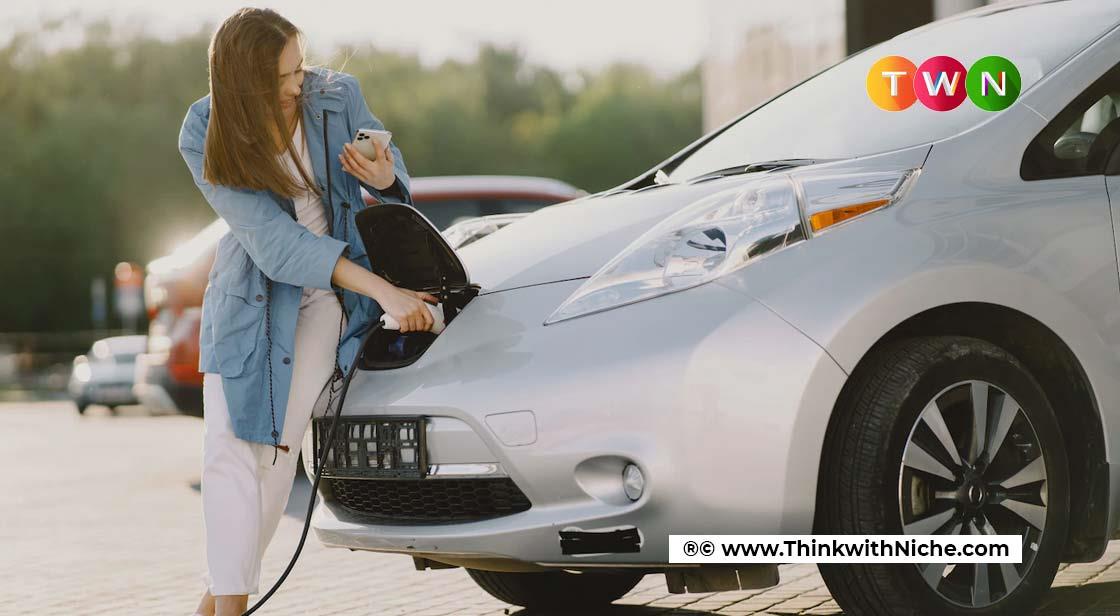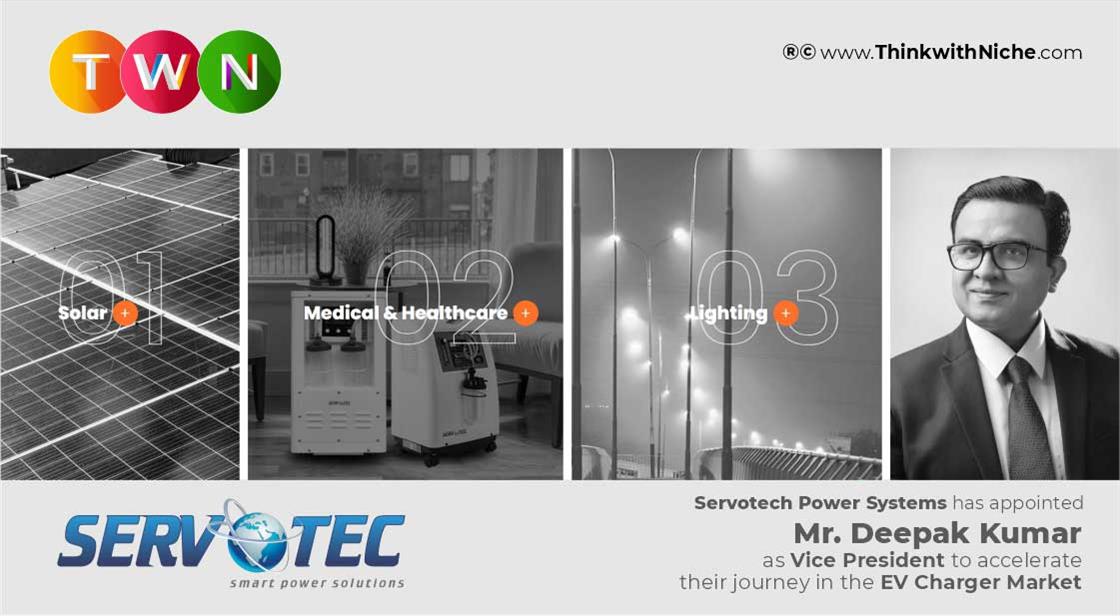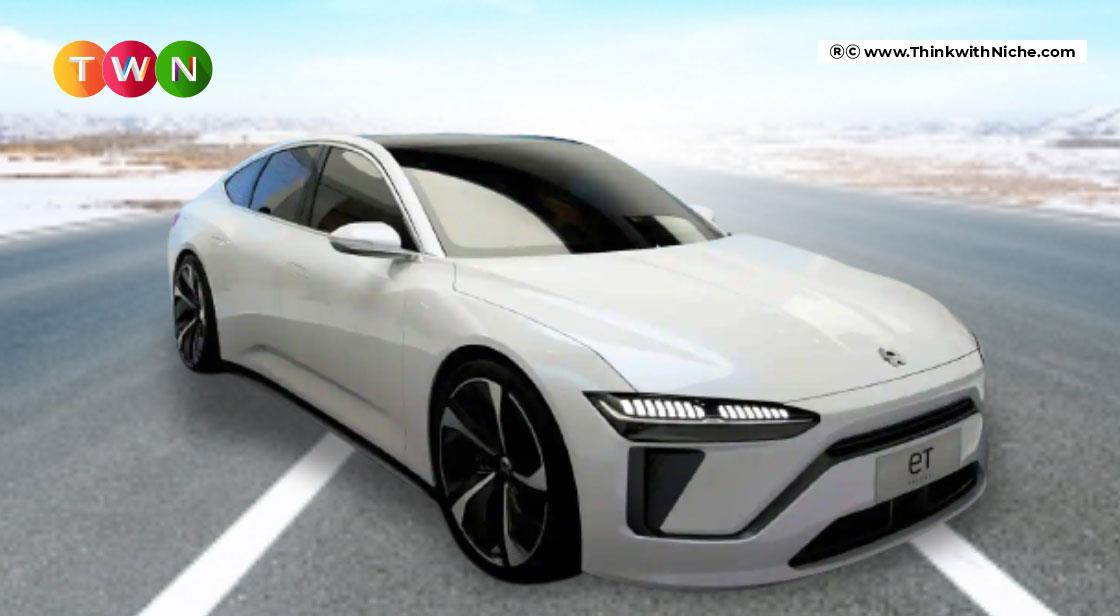Sustainable Future With EVs

Blog Post
For decades, global automakers have been frantically attempting to develop new and sustainable alternatives to fossil fuels. The overall environmental degradation has not been a hidden consequence of the world's burning of fossil fuels. And now, more than ever, there is a pressing need to transition away from fossil fuels and toward more environmentally friendly alternatives. The entire world has now joined forces and pledged to work toward a carbon-neutral world with zero carbon emissions. Electric vehicles would play a critical role in achieving that goal. Countries such as the United Kingdom, France, Norway, and Germany have even passed legislation prohibiting the sale of non-electric vehicles as early as 2025. As a result, the electric vehicle industry is one of the most exciting, significant, and necessary areas of innovation today.
The global electric vehicle market is expected to grow at a CAGR of 26.8 percent from 4,093 thousand units in 2021 to 34,756 thousand units by 2030. India has already expressed a strong desire to play a significant role in this automotive paradigm shift. In addition, India has already expressed a desire to become the world's largest hub for electric vehicles in the future. Electric vehicles are viewed as a promising option by industry leaders. Let’s uncover the Future of EVs in India. #TWN
In India, environmental pollution has nearly reached critical levels. According to the Climate Risk Index 2020, India ranks fifth, indicating that the country is vulnerable to climate change. As a result, it appears that e-mobility is the only viable option.
The Government of India decided to promote Electronic Vehicles (EV) to reduce pollution to mitigate environmental issues.
However, according to a Castrol report, new car owners will not be purchasing EVs until 2030 due to a variety of factors.
Proper infrastructure tops the chart as one of the most critical factors. Regardless of the drawbacks of using and promoting electric vehicles on Indian roads, the total number of electric vehicles on Indian roads will reach nearly 100 million in 2030, up from less than half a million in 2020.
But what exactly are electric vehicles or EVs?
More about Electric Cars
Electric cars are one of the most recent vehicles that run on electricity rather than traditional fuels like gasoline, diesel, or compressed natural gas.
The batteries in electric cars can be recharged and reused. In India, three types of electric vehicles are currently available. They are:
- Completely battery-operated electric cars
- Hybrid electric cars
- Solar-powered electric cars
The History of Electric vehicles
Electric vehicles’ history dates way back to the mid-nineteenth century. Ányos Jedlik discovered a new type of electric motor in 1828.
He built a small model car that could be powered by his new motor. Robert Anderson, a Scottish explorer, discovered a crude electric carriage between 1832 and 1839.
Professor SibrandusStratingh of Groningen, the Netherlands, and his German assistant Christopher Becker created a small electric car powered by non-rechargeable primary cells in 1835.
Initially, the speed of electric battery-powered cars was significantly slower than that of internal combustion engine vehicles. As a result, people would be unconcerned about investing in EVs.
However, the scenario shifted around the turn of the century. People began to be concerned about the hydrocarbon-fueled cars that cause pollution, bad gas emissions, and other environmental disasters.
Current Scenario
EVs have been gaining popularity (apart from public transportation) since 2010. The most surprising fact is that nearly 1 million electric vehicles had been delivered globally by September 2016.
The global acceptance of electric vehicles reached a tipping point at this point. The rate of acceptance was so rapid that by 2019, nearly 4.8 million cars had been sold, with 10 million units sold by 2020. (There has been a drop in 2021, with 6.5 million electric vehicles sold)
Since 2010, the cost of batteries has dropped by 73 percent, and electric cars have begun to accelerate their growth. The next ten years are expected to be the decade of electric vehicles.
"EV Sales Trend in India - January 2022"
Market Share of EVs in India
Electric vehicle manufacturing is becoming increasingly popular, and its market share is expected to grow significantly. By 2022, India's GDP is expected to increase by a staggering 25%.
The best part is that, in addition to reducing pollution, EVs can reduce oil imports by $60 billion by 2030. Imports currently account for 82 percent of India's oil demand. As a result, it is clear how beneficial it will be for the Indian economy if the import cost is reduced.
"Category-Wise EV Units Sold"
EVs Fuel Price
Surprisingly, the cost of electric vehicles' fuel can be as low as 1.1Rs/km. As a result, while traveling every 5000 km in an EV, the overall cost is reduced by about Rs 20,000. It will also reduce vehicular emissions, which would otherwise result in a 3% annual GDP loss.
Campaigns for EV Adoption
EVs are the only options when it comes to e-mobility. From April 1, 2020, to January 31, 2021, India's fuel price increased nearly 75 times.
With the ever-increasing price of gasoline (almost 95Rs/liter in Delhi as of June 2021), many Indian states have already embraced EV use. In this regard, Delhi and Kolkata are the two forerunners. They promoted e-rickshaws, which are both environmentally friendly and cost-effective.
One amazing fact is that nearly 1 lakh e-rickshaws are operating in Delhi, and Kolkata is not far from this rally. This advancement is incentivizing private car owners to switch to EVs.
The Indian government has begun to formulate EV adoption policies such as the National Electric Mobility Mission Plan (NEMMP), the Faster Adoption and Manufacturing of (Hybrid) and Electric Vehicles (FAME) Scheme, loan subventions, and income tax rebates, as well as similar state-level relaxations.
According to a Niti Aayog report, India aims to have at least 10 GWh of cell capacity by 2022.
Other ways in which the government is promoting EVs in India include:
- The GST amount has been reduced to only 5%, as opposed to the standard car's 28 percent.
- Loans of approximately 1.5 lakhs are exempted for the purchase of electric vehicles.
- Importing EV parts is exempt from customs duties.
- A five-year phased manufacturing program (PMP) until 2024.
Switch Delhi Campaign
Recently, a campaign known as the Switch Delhi Campaign was held in Delhi, in which people signed up to promote electric vehicles. It was an eight-week campaign that promoted the advantages of using electric vehicles for industrial, personal, and public purposes.
With such a positive response to EVs in India, several 2-wheeler manufacturers have decided to produce electric bikes in addition to the e-cars produced by 4-wheeler manufacturers.
Last-Mile Deliveries
With the rise of private automobiles, small transport, and other modes of good transportation, trucks were the only options. However, some last-mile delivery companies have taken the responsibility to use EVs for transporting deliverables and reducing the earth's carbon footprint.
Top EV Manufacturer Stocks in India
As India's EV market expands at a rapid pace, car, and bike manufacturers are increasingly inclined to produce more electric-powered vehicles.
Mahindra
Mahindra Electric is a pioneer in the electric vehicle industry. In 2001, they produced their first electric vehicle. Mahindra Electric's two most popular EV models are the Mahindra E20 and eVerito.
Tata Motors
Tata Motors, a well-known name in the Indian automotive industry for producing vehicles for personal use, public transportation, and other purposes, is relatively new to the EV segment.
Tata Motors' popular EVs include the Tigor EV, Nano EV, and Tiago electric variant. Tata, on the other hand, has concentrated primarily on Passenger Vehicles and electric buses. The demand for vehicles in this segment is expected to reach 4 lakhs soon.
Hyundai
Hyundai has dominated the EV market with the launch of its Kona EV in India. Hyundai's EVs are expected to travel 452 kilometers on a single charge. It answers the question that all vehicle enthusiasts in India have: "What is the mileage given?" However, the model will be available in 2-3 years.
Ashok Leyland
Ashok Leyland has designed buses and trucks to meet Indian road standards. They have introduced battery swapping in India, as well as operating vehicles such as the Circuit, HYBUS, Electric Euro 6 Truck, and the iBUS.
“TESLA” – The New HYPE or REALITY
According to Nitin Gadkari, Minister of Road Transport and Highways, Government of India, Tesla will launch Tesla cars in India in 2021.
The Indian government aimed to install 175 GW of renewable energy capacity by the end of 2022. It includes 10 GW of bio-energy, 100 GW of solar power, 5 GW of hydropower, and 60 GW of wind power.
At the United Nations Climate Action Summit, India's Prime Minister Narendra Modi announced a 450 GW renewable energy target by 2030, up from 175 GW by 2022.
With these highlights in mind, it is understandable that the government is accelerating the promotion of electric vehicles, which will use less non-renewable energy sources, rather than focusing on battery charging and emission-free transportation.
So, in this scenario, TESLA car promotion in India is a good option for Elon Musk's American company.
However, the subsidy provided to Indian companies is much higher, which may result in the manufacturing cost of local companies' parts being lower than that of TESLA.
Pros of Using EVs
The environmental friendliness of EVs is the primary factor that distinguishes them in the automotive industry. Several other factors, on the other hand, are far too significant to be overlooked.
Environment First
Electric cars have the potential to significantly reduce air pollution in Indian cities. These vehicles run on batteries, which produce no emissions like internal combustion engines. Even though they make little or no noise, these vehicles help to reduce noise pollution.
Lower Operational Cost
It is estimated that using EVs saves between 75 and 80 percent on fuel costs. When compared to other conventional vehicles, EVs have 75% fewer movable parts, resulting in a much lower maintenance bill.
A good Amount of savings
As the Indian government pushes for greater use of EVs, various incentives and tax breaks are being offered to entice more buyers.
BoP deficit
India imported crude oil worth 110-115 billion dollars in 2021-22 alone. This BoP (Balance of Payment) can be greatly reduced by using EVs.
Cons of Using EVs
Costly
EVs are slightly more expensive because they have lower maintenance costs. However, because the parts are small and scarce in the Indian landscape, the repairing cost rises.
Infrastructure Issues
The environment in which EVs are expected to operate is still ideal. In India, there aren't enough battery charging stations, car repair shops, or manufacturing plants. More vehicle owners are expected to buy EVs as proper infrastructure is gradually built.
Post Sales Service
Because EVs have yet to gain traction in India, after-sales service is also lacking when compared to conventional petrol and diesel vehicles.
Poor Road Condition
Because India's roads are in poor condition, cars have a shorter lifespan. Drivers must also be well-trained and aware while operating these vehicles.
What can be done for the Future Flourishment of EVs?
India's electric vehicle market is expected to grow at a CAGR of 22.1 percent soon. The main reason for this is the government's unwavering support and innovations aimed at resolving issues that might otherwise stifle the EV industry's growth.
- More tax cuts, rebates, and incentives should be given to the vehicle buyers along with the stockholders
- More spending on R&D
- Phasing out the ICE vehicles
- Creating proper infrastructure
- Several drives to make aware of the benefits of using EVs
India EV Policy
Are we heading towards a better future?
The automotive industry's eventual shift to electrification is unmistakable. However, in comparison to the rest of the world, India has made much slower progress. The top three barriers to faster adoption are a high price, a shaky charging infrastructure, and a lack of large-scale domestic manufacturing.
To address this, the federal government issued the FAME (Faster Adoption and Manufacturing of (Hybrid &) Electric Vehicles) policy in 2015, followed by the FAME II policy in 2019.
To capitalize on this and seize an opportunity, states are rushing to announce their own policies aimed at accelerating the adoption and manufacturing of EVs in their respective states. We examine what each state has to offer in greater detail.
For the time being, most states have either notified or drafted their own EV policies and while the Centre has exempted EV registration fees across the country, the majority of states have already gone a step further by waiving off-road tax on battery electric vehicles.
Another aspect that is receiving attention is charging infrastructure. Private players are being incentivized to build public charging networks, and new residential and commercial complexes must have EV-ready parking with charging facilities.
Different Perspectives
Individual state policies, on the other hand, differ. While some are working hard to increase demand for electric scooters and cars, others have chosen to promote EV manufacturing instead, at least for the time being.
In Maharashtra, Delhi, and Gujarat, substantial incentives are being offered to EV buyers, with some states even making the upfront cost of electric vehicles competitive with their ICE (internal combustion engine) counterparts. These state subsidies, it should be noted, are in addition to those provided by the Centre under the FAME II scheme.
But how do the states manage to give out such large sums of money? The answer is straightforward: the polluter pays. To fund their EV ambitions, many of these governments are imposing additional road tax on ICE vehicles, a green tax on re-registration of old vehicles, a cess on petrol and diesel, and a congestion fee on ICE cabs.
Southern states, among others, are, on the other hand, primarily focusing on electric vehicle production. Tamil Nadu, Andhra Pradesh, Telangana, and Karnataka all hope to attract thousands of crores of investment from EV makers over the next few years by providing subsidies on capital investment, taxes, and power tariffs, among other things.
Governments across the country appear to be warming to the idea of electric vehicles. Will customers follow suit?
The Takeaway
It is always difficult to transition from one technology to another. For decades, Indians have been accustomed to traditional automobiles. As a result, the transition to EVs will be difficult for them.
However, with proper marketing and financial incentives, electric vehicles will soon become a common occurrence in the automobile industry. EVs currently account for 1% of total car sales in India.
As a result, we can anticipate a significant increase in the number over time. By any chance, the Indian government intends to put 100 percent EVs on the road by 2030.
"Subsidizing manufacturing for all aspects of an electric drivetrain will undoubtedly improve the chances." Companies with better-researched go-to-market strategies will be able to manage their rollouts more effectively," explained Akhil Aryan, CEO, and co-founder of ION Energy.
If you liked reading this article, I have two more for you. Click on the link below to explore!
Servotech is Turbo Charged with Deepak Kumar as the VP- EV Charger Business Vertical
You May Like
EDITOR’S CHOICE














